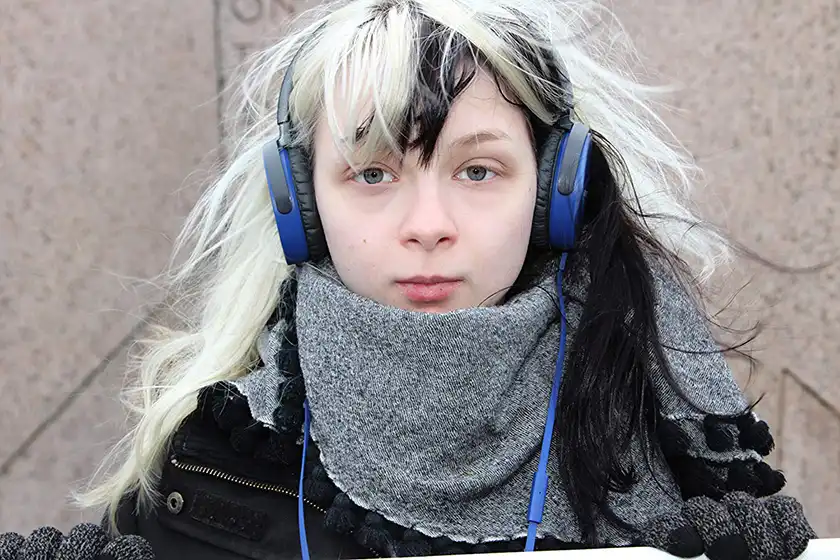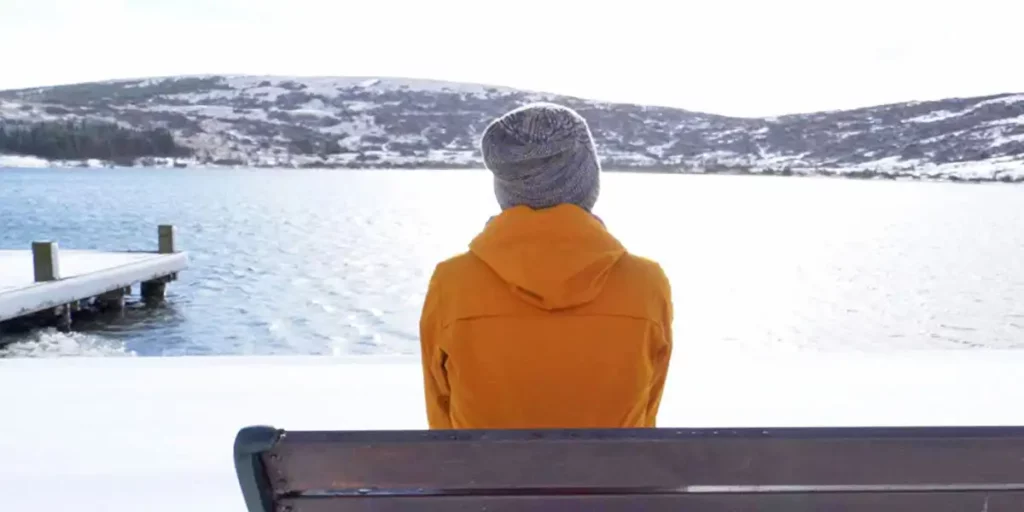In Seeing the Unseen, directors Kristján Kristjánsson and Bjarney Lúðvíksdóttir tour their native Iceland to sketch a powerful portrait of female autism and neurodiversity.
Do Martians live among us? If yes, how do they like to spend their time? Is it true that they eat human flesh for breakfast? Or that they murmur secrets to the Northern lights? Since I don’t really know the answers, we’d better ask directors Kristján Kristjánsson and Bjarney Lúðvíksdóttir, who toured their native Iceland chasing aliens down. Their quest has now taken the shape of film, and is being distributed all around the world as a moving picture. A documentary, to be precise. A documentary that is all about the kind of lipstick that Martians wear on a daily basis.
Aliens, as it seems, are charmingly enough dudes. They enjoy taking long walks through the frosty Icelandic countryside. They attend university programmes to continue their education. They have the memory of an elephant – so you’d better not annoy them. But most of all, they are on the lookout for love and affection. They marry, and they bear children into this world. Yes, we’re talking about she-aliens, and so is Seeing the Unseen, a survey of female autism in Iceland and a manifesto to improve autistic people’s living standards. Turns out the living beings we thought were aliens are just regular, boring humans instead. Still, they’re proud of it, and ask nothing more than being allowed to proudly wear the pin of social acceptance on their lapels.
Seeing the Unseen strides forward with the unrelenting rhythm of freestyle poetry. It is a safe space for incredibly normal people to discuss their extraordinary way of living, and to find solace from the crowds of dreadfully boring neurostraight companions that fill up their imaginary. In fact, what the film does is let out a powerful, but gentle, rallying cry: diversity issues encompass contemporary society as a whole. Therefore, the path towards an inclusive society crosses the field of neurodiversity, and demands that action is taken to tackle the on-the-rise disparity between those who are deemed “socially fit” and those who aren’t.

Thus, Seeing the Unseen’s mission becomes chalking autistic people’s identities on the blackboard of everydayness. A mosaic of interviews and TED-like talks, the documentary forces us to acknowledge our own prejudices against neurodiversity, and, in doing so, it puts under indictment Western societies’ shortcomings in dealing with those who don’t wish to – or aren’t able to – conform to their self-imposed standards. Beautifully linked through an Iceland-glacial narrative cinematography, the protagonists’ depositions run along the thread of a declaration of intentions spoken out loud in the affirmative mode. It’s high time we turned the tables and started thinking about what autistic people are instead of what they are not – and maybe questioned our sanity in our own turn.
The road to revolutionary inclusion has barely begun, yet we already feel outnumbered by the “weird ones” already. They have motivation. The have strength. They know who they are and what they want, and they are fed up with complacency. They belong to the Moon, and they know the reason why they’re on Earth better than anyone else. They can feel the sea rushing through their veins. They’re like Venus, but with Athena’s fiery belligerency. These are Seeing the Unseen’s autistic women. And they’re ready to love you like no one else has ever done before.
Seeing the Unseen premiered at the Glasgow Film Festival on Thursday 5th March, as part of an event organised by the Glasgow Women’s Library.

